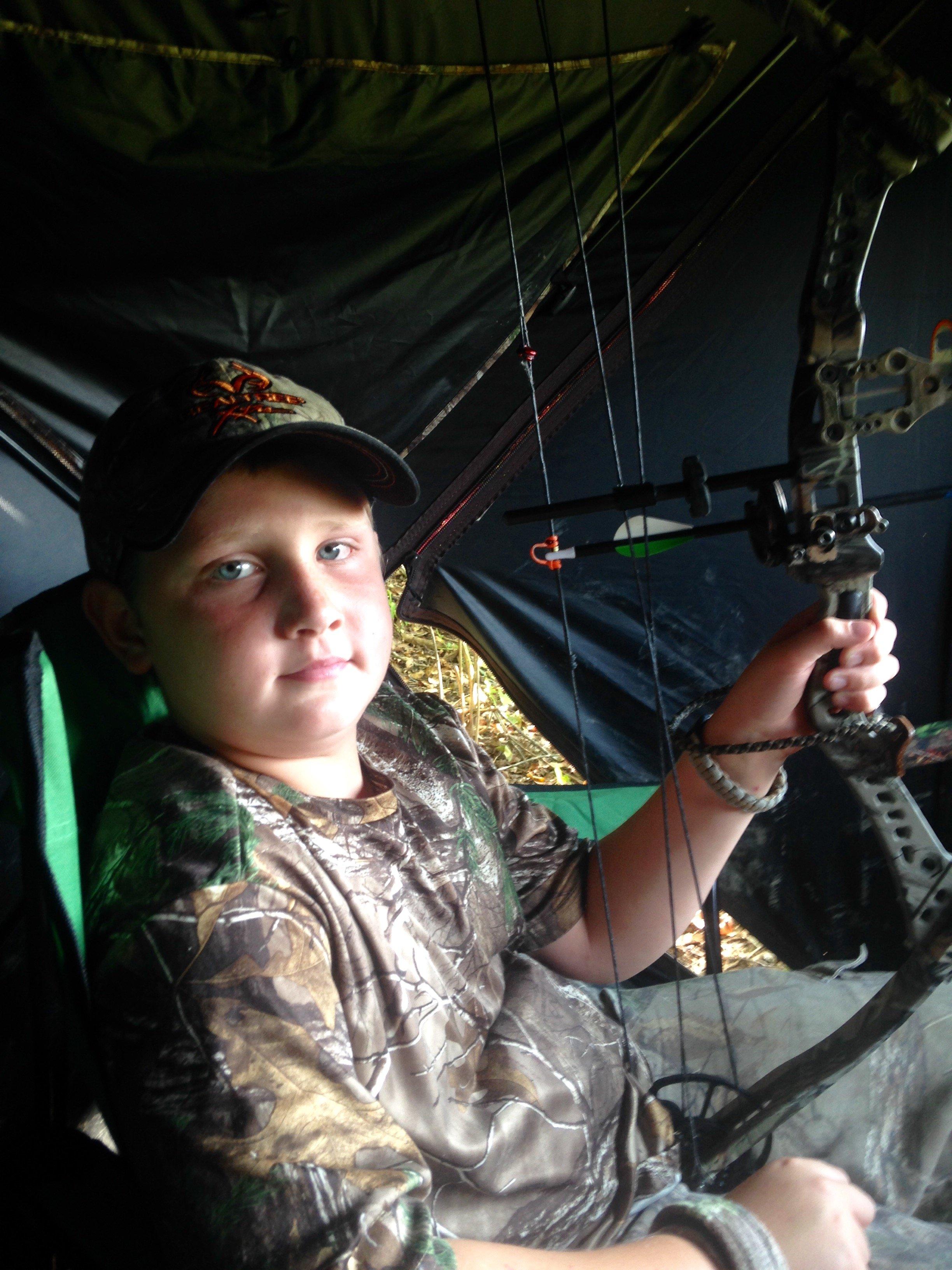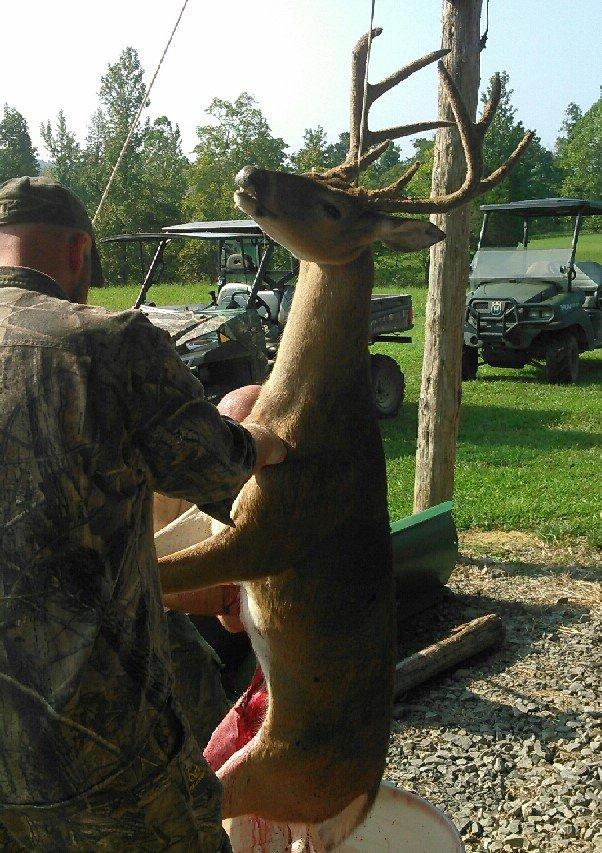I live for opening day of archery deer season. But here in Kentucky it rolls around at the start of September. The temperatures are hot, the humidity is high, and the deer are still in their summertime patterns, making early season success a very real possibility.
Potroast and I spent the opener inside a ground blind. The thermometer on my truck hovered right around 95 degrees, making the temperature inside the blind pretty much on par with the low setting on a Weston Realtree Slow Cooker. We didn’t kill a deer, but we were ready in case we did.
- Be picky about your shot. Yea, all of us know that we should only take high-percentage shots and not stretch the limits of our archery ability, but that rule particularly applies during the hot weather of early season. Long recovery times and summertime temperatures don’t mix. Keep the shots close, the angles broadside or quartering away, and be conscience of anything that might deflect an arrow. Potroast had a shooter buck at 30 yards on opening day, but his father-imposed shot limit is 25 yards. The buck was alert and staring holes at our ground blind. Could Potroast have made the shot? Probably, but the extra distance and alert deer might have resulted in a less-than-perfect shot placement. We simply watched as the buck melted back into the cover, content that we might run into each other again later in the season.
- Go after the deer in a hurry. I like to wait 20-30 minutes before starting on the blood trail when the temperatures rise, far faster than I would if it were cooler. I let the shot appearance and the blood trail be my guide. If the shot looked good and the blood trail is heavy, I quietly begin to follow. Those extra few minutes can go a long way toward prime venison vs. an off flavor outcome.
- Field dress in a hurry. Take the time to get a few quality photos, good photos go a long way in preserving memories, but don’t waste any time doing it. Get the deer field dressed as soon as possible after the recovery to begin the cooling process.
- Get the meat on ice. I never hit the woods in the early season without a cooler full of bagged ice or frozen jugs of water. Yes, more often than not, the hunt ends with no meat and the ice is wasted, but for those successful times, you will be glad you have it with you.
- Skin and quarter or bone out the meat in the field. If you hunt more than a half hour from your house, prepare for the possibility of success and bring the equipment you need to process your deer in the field. A knife and saw set like this kit from Weston, along with a gambrel and rope set will allow you to hang your deer from a convenient limb and get the meat broken down and in the cooler immediately. A jug of clean water comes in handy for cleaning the body cavity in the case of a punctured stomach or intestine, either from the shot or a field dressing nick.
- If you hunt within a few minutes of home, or if you plan to take your deer to a processor, place the deer on a tarp or blanket, pack the cavity with ice, then pack more ice along the back and hams of the deer and wrap with the tarp or blanket to trap in the cold.There are even bag coolers on the market designed to hold an entire deer.
- Hang your deer in a walk-in cooler to age. If I don’t have access to a walk-in cooler, I quarter or bone out the deer and place the meat in a cooler on ice. Open the drain plug and tilt the cooler so that any water from the melted ice drains from the cooler. With additional ice every day or two, I have kept meat fresh for up to a week before the final processing steps.
The body temperature of a whitetail deer hovers around 104 degrees. Your goal is to get that temperature down to 41 degrees or lower in as little a time as possible.
Buddy Blake Hoover did just that when he scored on a nice velvet buck this past weekend. Even though the temperatures were high, Blake was able to keep the shot-to-cooler time short and now has a freezer full of great venison to go along with his trophy buck.
How do you deal with hot-weather field care? Any tips not mentioned here? Let us know what you do to keep your venison in tip top condition.














